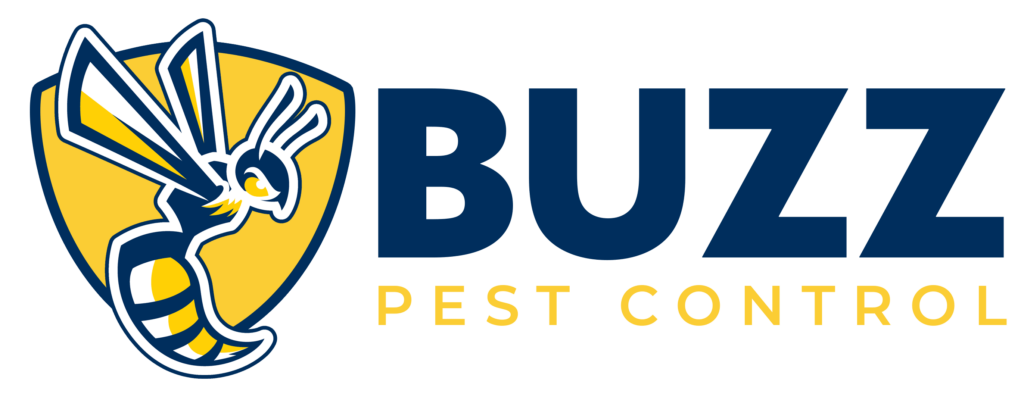Termite awareness week was first started by the NPMA (National Pest Management Association) in 2011. Contact Buzz Pest Control for a free termite inspection service!
Termite damage can have profound effects on property owners, both financially and emotionally. The silent and often unnoticed destruction caused by termites can lead to significant structural damage, requiring expensive repairs that are not typically covered by homeowners’ insurance policies. Beyond the financial impact, dealing with termite damage can be a stressful and time-consuming process for property owners. The discovery of a termite infestation can cause significant anxiety about the integrity of the home and property value. These concerns worsen as the infestation persists, leading to greater damage and higher repair costs.
Termites, notorious for their wood-destroying behavior, inhabit 70% of nations globally. Remarkably, their numbers surpass human populations at a ratio of 10 to 1. Gaining insights into termite behavior and habitats is essential for safeguarding your property against these destructive pests. Recognizing early warning signs of termites can save property owners from extensive damage and costly repairs. Termites in Missouri (Include a picture of subterranean termites & a caption)
Due to the heat and humidity, Missouri provides the perfect environment for the most destructive species of termites, subterranean termites. Termites build tunnels, often referred to as “mud tubes” or “shelter tubes”, for traveling to reach food and to protect themselves from open air. Their soft bodies require moisture, and being exposed to sunlight and outdoor air can be fatal. Their hard, saw-toothed jaw allows them to bite off small fragments of wood one piece at a time. They eat 24 hours a day, 7 days a week and can critically damage the structure of a property and, in extreme cases, cause a total collapse. This is why they are known as “silent destroyers” and are a homeowner’s worst nightmare.
The significance of catching early warning signs of termite activity early cannot be overstated, given their social nature. Termites operate collectively within highly organized colonies that can be made up of millions of individual termites. This complex society is structured around specific roles—workers, soldiers, and swarmers—all working together as a cohesive unit. Understanding this coordination highlights the importance of early intervention to curb their destructive impact, showcasing why vigilance for signs of termite presence is crucial.
Termites Specific Roles:
- Workers
- Soldiers
- Swarmers
Worker termites make up the largest group in a colony. Workers uphold the colony’s well-being, forage for food, provide grooming for their fellow nest mates, and engage in the construction or maintenance of the nest. They, like soldier termites, are white to off-white and do not have wings.
(Picture of Worker Termites, Soldier, and Swarmer Termites with Caption)
Soldiers have one main role, to protect the colony. They have enlarged jaws that can block tunnels in case of an attack by ants.
Swarmers are the reproducers. They are the only termites that fly. Their sole purpose is to leave the colony, reproduce and sustain their species. The good news is they do not bite, sting, or even eat wood. Swarmers are dark brown to solid black and have rounded wing tips with all four wings being the same size. Swarmers are often mistaken for flying ants. Termites have one solid body size. Ants have a thin neck and waist that separates the three sections of their bodies.
In the springtime, after the last freeze, when temperatures reach about 70 degrees, the young reproducers emerge from their nests in search of a new location to establish their own colony. Once they settle on a location, they drop their wings, and become king and queen.
- EARLY WARNING SIGNS OF A TERMITE INFESTATION:
- Termite Swarmers or Discarded Wings: The appearance of flying termites or finding their discarded wings can indicate the presence of a nearby colony looking to expand.
- Mud Tubes: Constructed by termites for travel between their colony and food sources, these earthen tubes protect them from predators and maintain moisture levels.
THINGS THAT COULD BE ATTRACTING TERMITES:
WOOD!!! This wood, that wood, anything made of wood. Wood mulch retains moisture. It is a good idea to reduce the use of wood mulch and not allow it to touch your foundation. Landscaping timbers on the ground. Storing wood against your house. Dead trees and stumps. Untrimmed trees and shrubs. Leaks and excess moisture. Standing water. Damp crawl spaces or basements. Cardboard also attracts termites in certain areas, like crawlspace or in the garage next to the foundation.
TIPS FOR PREVENTION:
- Inspect the perimeter of your home for rotting wood, mud tubes, or actual termites.
- Pay attention to any large number of flying insects emerging indoors and call a professional immediately.
- Eliminate any sources of moisture. Damp soil can attract termites.
- Ensure all water is being diverted away from your home. Downspouts, gutters, and splash blocks are a few examples.
- Do not stack firewood or lumber near the home, and always inspect it carefully before bringing it indoors.
- If your home is newly constructed, remove old foam boards and grade stakes.
- Contact Buzz Pest Control for a free termite inspection!
Safeguarding your property from the silent threat of termites requires vigilance and proactive measures. Buzz Pest Control offers a free termite inspection service. By taking advantage of this offer, you can ensure early detection and prevent potential damage, saving yourself from the stress and financial burden of extensive repairs. Don’t wait for signs of an infestation to become evident. Contact Buzz Pest Control today and take the first step towards protecting your home and peace of mind from these destructive pests.


